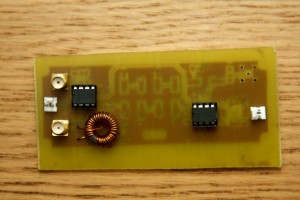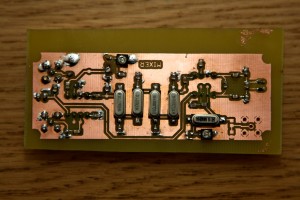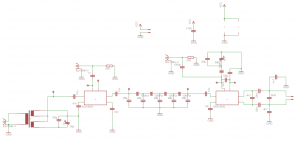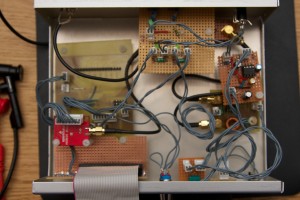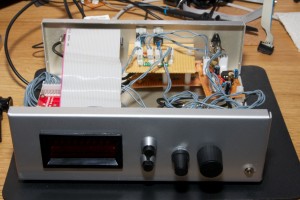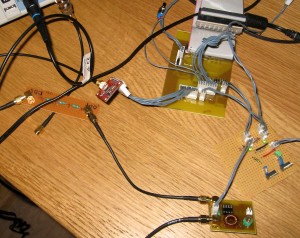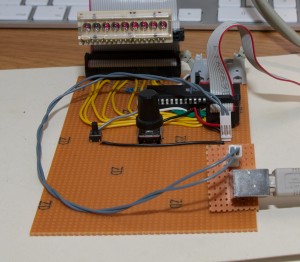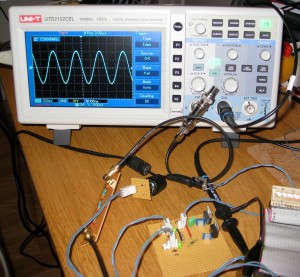Superheterodyne Mixer
Here is my new mixer module. It is a superheterodyne receiver with a 4 pole 10MHz crystal filter. It uses a 10MHz crystal as BFO with the option to solder in a connector for an external MCU controlled BFO.
I have decided to use surface mounted components to avoid drilling since it is boring and creates lots of dust and noise. Sadly enough I could not find SMD versions of the SA612 at my local electronics supplier so I had to use the through hole mounted version. The connectors are also through hole mounted in order to get some mechanical stress relief.
Component side of the mixer module. The RF mixer is on the left with RF in and LO connector. The right side is the IF mixer.
On the solder side we can see the crystal ladder filter and the BFO with a trim capacitor to tune the BFO. The other trim capacitor is used to tune the LC circuit at the RF input.

